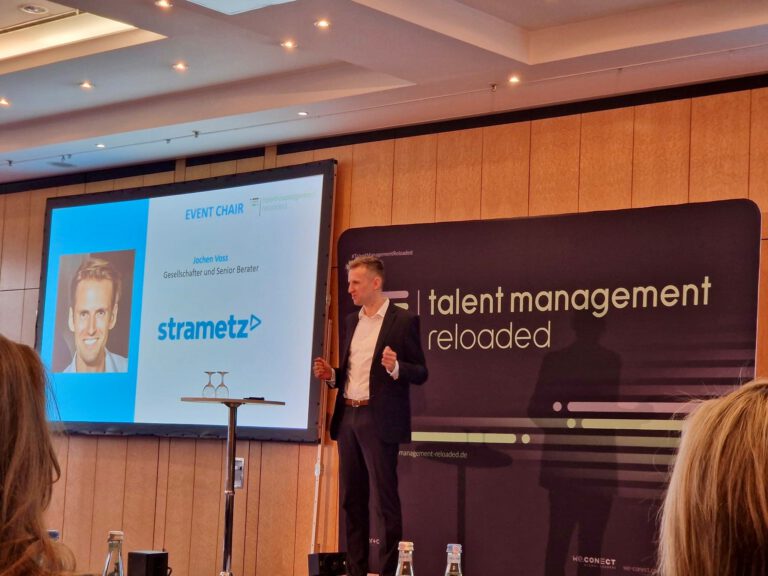Leadership im Wandel der Zeit
Wie sah der nextleader vor 25 Jahren aus? Dr. Winfried Felser fasst in diesem Artikel seine eigenen Erfahrungen zusammen, die er 1991 in einem kleinen Dorf in Spanien im Lab 2000 gemacht hat. Auch wenn es auf dem ersten Blick nicht besonders spannend schien, so gab es auch damals schon den nextleader, der die Herzen seines Teams gewonnen hat, authentisch war, ein Wir-Gefühl durch einen gemeinsamen Sinn erzeugt, neue Führungskräfte befähigt und Autonomie gefördert hat und gleichzeitig klare Ziele verfolgt und auch erreicht hat. Natürlich hat sich die Welt im letzten Vierteljahrhundert verändert und doch sind diese Aspekte für Führung heute noch genauso relevant und im Kontext von Digitalisierung, Netzwerk Economy und anderen Werten eine neue Anwendung finden.
New Leadership 25 years ago: They called him „Zufi“ or how to become Chief of IBM Spain!
In this article I want to discuss on one hand “New Leadership” and my personal experiences with “New Leadership” more than 25 years ago. On the other hand it is my way to say thank you to an outstanding IBM team and a very special member of this team, @Juan Antonio Zufiria. Even years later I speak about my time in Madrid because centuries before New Leadership became popular – especially in the context of the Digital Economy – I had the honor to learn from “Zufi”, what New Leadership could be. Being authentic, winning the heart of your team, establishing a WE by a common purpose, enabling new leaders, accepting autonomy and at the same time being clear in what is to achieve – certainly this helped him not only to lead Lab 2000 in the early years of the Digital Economy, but later to become IBM Chief of Spain and the rest of the Meditarian world too. And it helped me to improve my „Leadership“ phenotype (within the limits of my genotyp!).
From „New Leadership“ to „Next Leadership“
Nowadays everybody talks about “New Leadership” in times of „Digitalization“, „Net Economy“, „New Values“ and whatever you want. Transformation is necessary. Nevertheless I am not happy about all aspects of the discussion. The most important reason: New Leadership is not that new at all, at least not for everybody. I prefer #NextLeadership as a process with different maturity levels as it is described and developed in Germany by Strametz. For example I experienced 25 years ago New Leadership in a little village in Spain in the extraordinary microcosmos of the so called Lab 2000.
As Gibson once said: The future is already here – it’s just not very evenly distributed. Future was there – in the middle of (k)nowwhere. In Tres Cantos.
My Tres Cantos Experiences
Where was the future in 1991? Lab 2000 in Tres Cantos – let´s describe it as a small version of a IBM Watson Research Center – was in many aspects a blueprint for the future of the „Cognitive Era“: This organization full of outstanding engineers and computer scientist was certainly similar to some stylish new venture lab now established in Silicon Valley – at least concerning the teams and their working habits (less concerning the offices / environment).
More important for this article: There in this small village near Madrid the so called New Leadership existed already in 1991 and it certainly existed in other places in former times too. Old Leadership did not work in former times and does not work nowadays when the circumstances are similar to those we experience now almost in every company. New Leadership was and is not an option, it is a necessity in a world of VUCA (volatility, uncertainty, …) and a world of new values with complexities you cannot manage with a command and control style of work and with employees no longer willing to accept such a style. But let me start in a more canonic way – at the very beginning 😉
From Paderborn to Buenos Aires, almost!
Long, long ago …. More precisely 27 years ago when I was a young and ambitious student in the city of Paderborn. I wanted to work abroad and far, far away … from Paderborn. To understand this you have to know that Paderborn is a small, old and wonderful city, but the place where the Pader, the smallest river of Germany, is born, is not really the most cosmopolitan place for a young ambitious student 😉 As a consequence I applied for a scholarship of IAESTE (an international student organization for engineers, similar to AIESEC) to work and live in Buenos Aires which at that time was for several reasons for me the ultimate cosmopolitan opportunity (strange enough not New York or San Francisco).[nbsp] My favorite company was IBM at that time because I started my professional career 5 years ago working on a huge IBM 360 mainframe system and it was a former IBM Manager and my CIO in the Kaufhof AG who gave an important award and a vision of the „personal“ IT of the future.
When IAESTE did not send me to Buenos Aires, but to Madrid I was a little bit disappointed, not knowing anything at that time about the wonderful unique character of Madrid, the „Movida Cultural“, a funny project leader called Inma and three guys who would teach me more than I could have learned anywhere else in the world. But first the frustration was even bigger, when I realized that I worked for IBM, but not in the impressing center of Madrid, but in a village nearby. Tres Cantos – three songs! Also it sounds as funny as “good air”, I did not expect something similar to Buenos Aires. And I was right and it did not get better, when I saw the new offices. Somewhere in the middle of nowhere and of some new houses was a bakery and above some offices. That was all: That was Lab 2000, the future of IBM and some Spanish partners and my destination.[nbsp] So I left Paderborn to conquer the world and what I found was this:

Do not judge a book by its cover![nbsp] People count! These idioms could not have been more true than with Lab 2000 in Tres Cantos. When I left 4 month later it was only for private reasons, apart from this I certainly would have stayed with this great team. Only two example to understand the special character of the team: Professor Alfonseca for example, the scientific head, was a genius Computer Scientist and at the same time author of books for children. His OOPI-Language was a concept of “semantic programming” far beyond Smalltalk [&] Co and still 25 years later I appreciate his concepts. Unfortunately IBM never made something out of it. But one day in the cognitive era perhaps they will re-discover his work on frames and semantic networks, I think they should ;-).
At least he inspired me in my own work on a fractal theory of the cognitive and collaborative economy based on semantic networks and frames / pattern (we call it the Competence Networking Economy). He opened my mind beyond Platon and Aristoteles, certainly not knowing it. Or “Tito” – the Spanish version of NEO before NEO was invented by the Wachowski brothers (for their trilogy of Matrix). For me as a young student he was the prototype of how to be cool, smart and successful at the same time. Two doctoral thesis, one from Stanford, one from the Universidad Politécnica de Madrid,[nbsp] MBA of IESE (founded by the Opus Dei!) and a candidate for almost flying to the moon. What a combination!
The Zufi Case – New Leadership, 25 years ago
You have to understand the special quality of this workforce to understand why New Leadership was not an option, but somehow a necessity. And now last, but not least I would like to mention a third member of the staff, the “chief” or better the co-chief (Tito was the other one). It was “Zufi”, this was how at least we all used to call him in Lab 2000. I will call him “Zufi” in the context of this article too, not as a form of disrespect, but vice versa as a form of respect and transformation in a phenomenon. Juan Antonio Zufiria was the one, who had to build a successful team out of a network of outstanding people and later – when IBM was in a short period of crisis – even convince this Big-Bang-Theory team no longer to create high end, front running applications like OOPI and multi media databases to document some Maya project, but to develop commercial software where the intellectual challenges are reduced to the mathematics of business administration (that means plus and minus,…).
So what were the most important competencies for „New“ Leadership in such a context? To be honest: I do not know. The only thing I know is what I appreciated in Zufis style of leadership. I have to be honest in a second point too: When I describe his style it is not mainly based on my personal experiences and interactions with Zufi, but on the talks with the team which made me – I hope so – understand this new logic of management.
One typical scenario may illustrate the difference straight from the beginning:
I was fascinated in Tres Cantos by the freedom we had in doing our work and organizing our life-work-balance. After lunch for example we had the opportunity to go swimming or to play Squash in a IBM partner location. In the morning we went together to the bakery mentioned above to have breakfast.
What impressed me most: sometimes our team had lunch together with Zufi in a restaurant of a „racecourse“ nearby (La Zarzuela). Having worked for Kaufhof and Siemens before I was totally irritated about a business lunch for almost two hours, drinking wine, talking about private things and – by the way – about the projects and milestones. Now looking back I would not call it a normal lunch anymore, but a very intelligent form of weekly[nbsp] Scrum meeting ;-).
My project leader opened my eyes when she told me that the side effects of this wonderful lunch mostly were that at the end everybody had committed himself to tough schedules and conflicts had disappeared through some charming, informal talks with Zufi or within the team. Where management usually is built on bureaucracy, this ongoing management style was fluid in a very edgy way. The “darker side” of our life-work-balance and “New Leadership” was that we worked hard even in the evening or night and – strange enough – enjoyed it!
Five Competencies – buzzfeeding Zufi
So if I am asked to sum up what makes the difference I would point out:
Be authentic
Someone has character – I do not know if this phrase is internationally understood, but it means for me (and Aristoteles) being someone who is authentic and reliable. Zufi was born in San Sebastian, in “el pais basco“ and later empowered with a special gift of God – an incredible mustache. So Zufi was authentic even concerning his physical appearance. Living a long time in the US for his PhD thesis and other engagements, he still represented a unique, mixed culture of “pais basco” and a cosmopolitan way of life.
Win the hearts of your team
One evening when we had to work until 23 o clock one of the project leader ordered some pizza for the team and asked the team members to pay their part of the bill. This would never have been the leadership style of Zufi. Appreciating your team sometimes is best expressed by paying the bill, but not as a form of manipulation, but as a form of culture. Such symbolic actions representing your attitude towards your team and their tough work sometimes can have a fundamental impact.
Establish the “We” through a common purpose
In Germany we have a “We” initiative which promotes a new culture of collaboration. New Work evangelist Harald Schirmer has – independent from this initiative – helped to promote such a We culture in the organization of Conti, one of the biggest automotive companies in Germany, establishing a social collaboration platform to connect the network. But how to make a We out of the many people beyond the technology? When the development teams of Lab 2000 worked under tough circumstances they gave their best because of the common purposes to achieve. One week for example we were expecting the CEO of Spain to present the results of our work. Even the apprentice of IAESTE (me!), whose work was of no relevance for this presentation, gave everything to show that the LAB 2000 team can not only realize OOPI and other high end apps, but successfully superior commercial applications too – if necessary.
Enable new leaders
Leaders don’t create followers. They create new leaders. – Tome Peters
Leaders have followers – this is a very popular New Leadership citation on Twitter and other social platforms. Tom Peters prefers “Leaders create (or better enable) new leaders”. “Truly amazing leaders empower others to become leaders” writes Ekaterina Walter on Forbes. I agree. In Lab 2000 Zufi was not a Super Manager, but he was part of several people leading not within a hierarchy, but within a network of teams and goals.
Accept autonomy, but be clear in the goals to achieve
What certainly was outstanding was the autonomy of everybody, at least this was my impression. At the same time Zufi and other colleagues responsible for the coordination of teams were clear in their goals. New Leadership does not mean reduced standards concerning the results but new paths to achieve results.
Five „How tos“ are not enough …
Looking at the list above it seems as if only soft factors are responsible for the success of a leader. That is certainly not true. Zufi for example was at same time educated in Engineering and Business Administration, that helped him a lot to understand both sides. Nevertheless even with this additional competence the list of how to become chief of IBM Spain is not complete and I do not know how to complete it. Actually I do not want to complete it, not being a “New Leadership” evangelist at all. At the end there is always something special that makes the difference underneath certain circumstances. I am for example not chief of IBM Germany 😉 I had to find my own way in my context as everybody else has to – beyond simplified “how to” lists. Nevertheless looking back at Zufis leadership style helped me very often to rethink my “leadership” style at least as far as my character and genotype allows it to.











